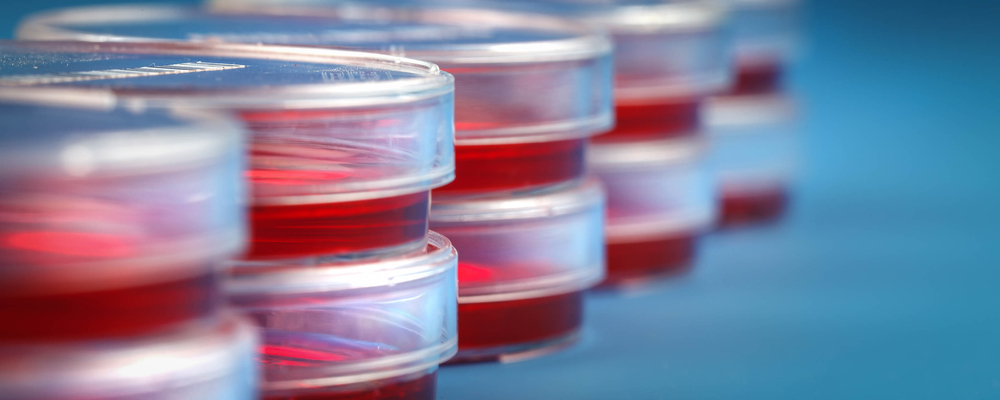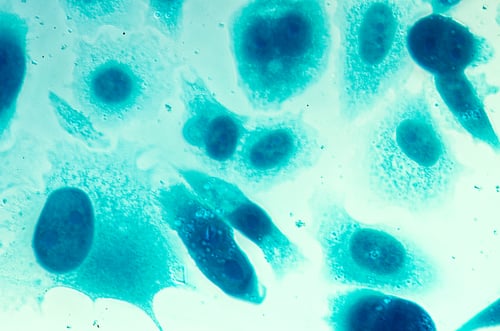Oxygen and The Cell Cycle

From humans to bacteria, living beings must undergo dramatic changes as they progress through their life cycle. Cells in cell cultures are no different. They too undergo biological changes as they grow and reproduce, giving way to new cells through time. Understanding the cell life cycle and how different conditions, including oxygen, may affect it, is particularly important in modern-day biotechnology.
Cell culture applications are on the rise as the scientific community tries to better understand how we can tackle difficult medical conditions and better understand the human physiology.
Depending on cell type and location in the body there is a specific physiological amount of oxygen present, and these conditions must be replicated in culture chambers. We often see cell chambers kept at normoxic conditions. Normoxia is the term used to describe oxygen levels between 10–21%. But what if we want our cells kept in hypoxic conditions? Hypoxic chambers are only now becoming a popular tool in cell culture applications. Hypoxia is a condition of low oxygen tension, typically in the range 1–5% O2, and is more physiologically relevant for some cell types, such as stem cells.
The Cell Cycle Under Normoxic Conditions
When we consider the stages of the cell cycle, there are several important steps: It must grow, duplicate its genetic material, the DNA, and physically split into two ‘daughter’ cells. Those daughter cells will follow the same steps, ultimately producing more daughter cells. In eukaryotic cells, those that contain a nucleus, all the steps can be identified by two main phases: Interphase and the mitotic (M) phase. Under normoxic conditions, and if other growing parameters are within a reasonable range for the cells, they will proceed through the cell cycle as intended.

Cells Under Hypoxic Conditions
While the scientific community is only beginning to understand the role that oxygen plays on the behaviors of cells, it has been discovered that the cellular response to hypoxic conditions of low or no oxygen is governed largely by a group of transcription factors known as hypoxia inducible factors (HIFs). Under hypoxic conditions, this otherwise inactive group of DNA binding proteins accumulate in the cell nucleus, and either activate or deactivate certain cellular responses to mediate the response to hypoxia. Their role varies depending on the cell type as some cells, for example red blood cells, respond better to low oxygen conditions than others.
Generally, when the oxygen levels are consistently set too low for the cell, HIFs respond by decreasing metabolic function and inducing cell cycle arrest. As the cells proliferate, they continue to consume oxygen, resulting in an even more hypoxic state. If normal oxygen levels are not returned, eventually, the cells will stop dividing and cell death may occur.
The effects of oxygen on the G1, G2, and S phases of the cell cycle can be significant and can vary depending on the type of cell and the oxygen concentration. In general, low oxygen levels during these phases can have both positive and negative effects on cell growth and proliferation.
Positive effects of low oxygen levels on the phases of the cell cycle include:
- Increased rate of cell proliferation: Low oxygen levels can stimulate cell proliferation, as cells respond to the reduced oxygen availability by activating specific pathways that promote cell growth and survival.
- Increased resistance to cellular stress: Low oxygen levels can also increase a cell's resistance to cellular stress, as cells respond to the reduced oxygen availability by activating pathways that protect them from damage.
- Maintenance of cell viability: Oxygen is required for cells to carry out normal metabolic processes, including mitosis, and low oxygen levels can lead to cellular damage and death.
- Support of normal cell division: Adequate oxygen levels are necessary for normal cell division, as cells require oxygen to carry out this process efficiently.
Negative effects of low oxygen levels on the phases of the cell cycle include:
- Decreased efficiency of cellular metabolism: Low oxygen levels can decrease the efficiency of cellular metabolism, as cells are less able to generate energy through aerobic respiration.
- Increased risk of oxidative stress: Low oxygen levels can increase the production of reactive oxygen species (ROS), which can cause oxidative stress and damage to cellular components such as DNA, proteins, and lipids.
- Impaired cell division: Low oxygen levels can impair the process of mitosis, the phase of the cell cycle where cells divide into two daughter cells, leading to cell cycle arrest or apoptosis. This can occur because low oxygen levels can inhibit the activity of enzymes involved in cell division and increase the formation of DNA damage.

Why Do We Care About Oxygen?
It has been found that some cellular properties are largely dependent on the amount of oxygen as the cells are growing. Having too much or too little oxygen causes stress on the cells, and as you are passaging your cells, this can accumulate as genetic mutations. This means that the cells you end up with after several passages might not be the same as the cells you started with. Monitoring the oxygen levels inside your cell chamber and culture is critical to ensuring the success of your research.